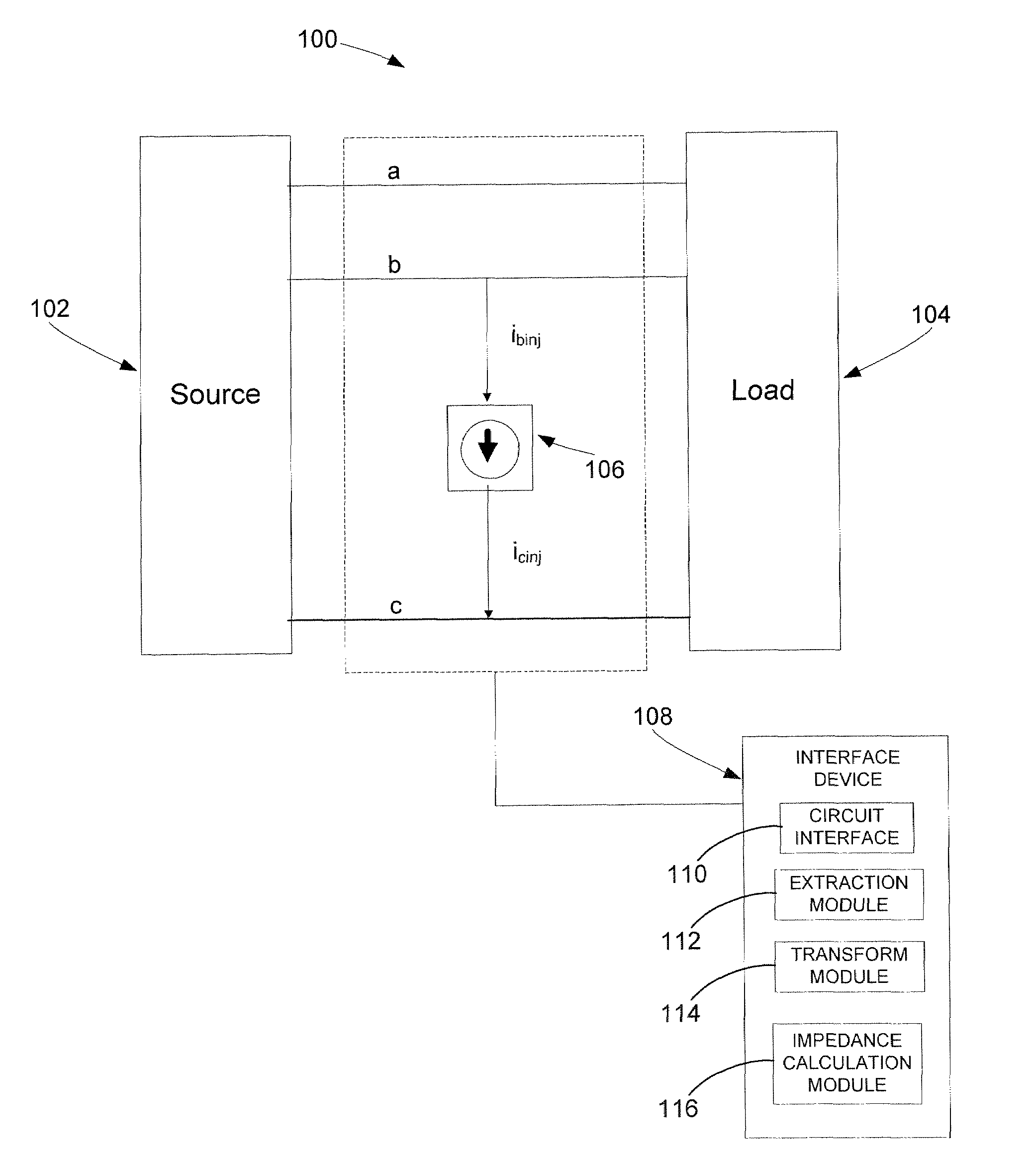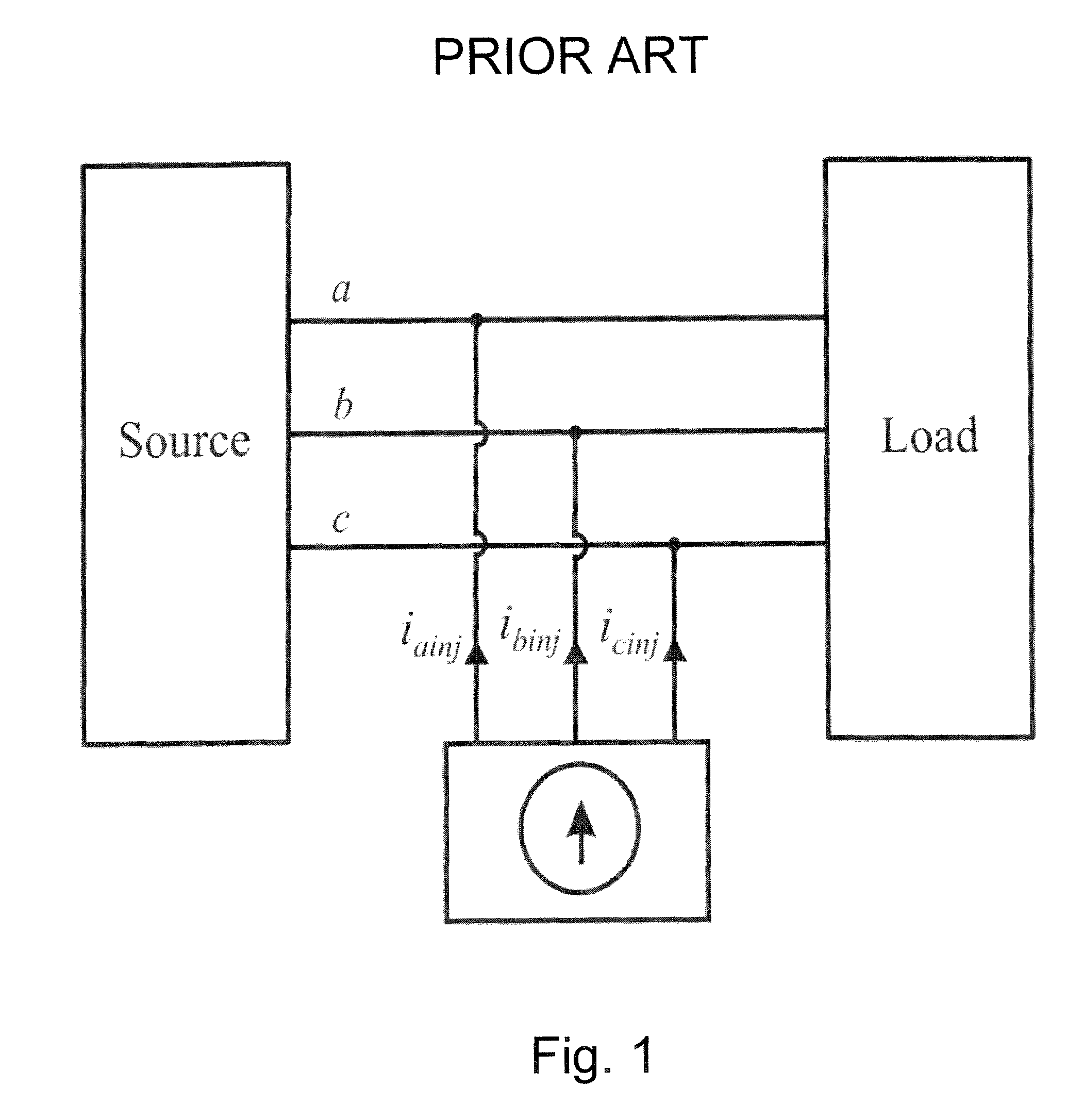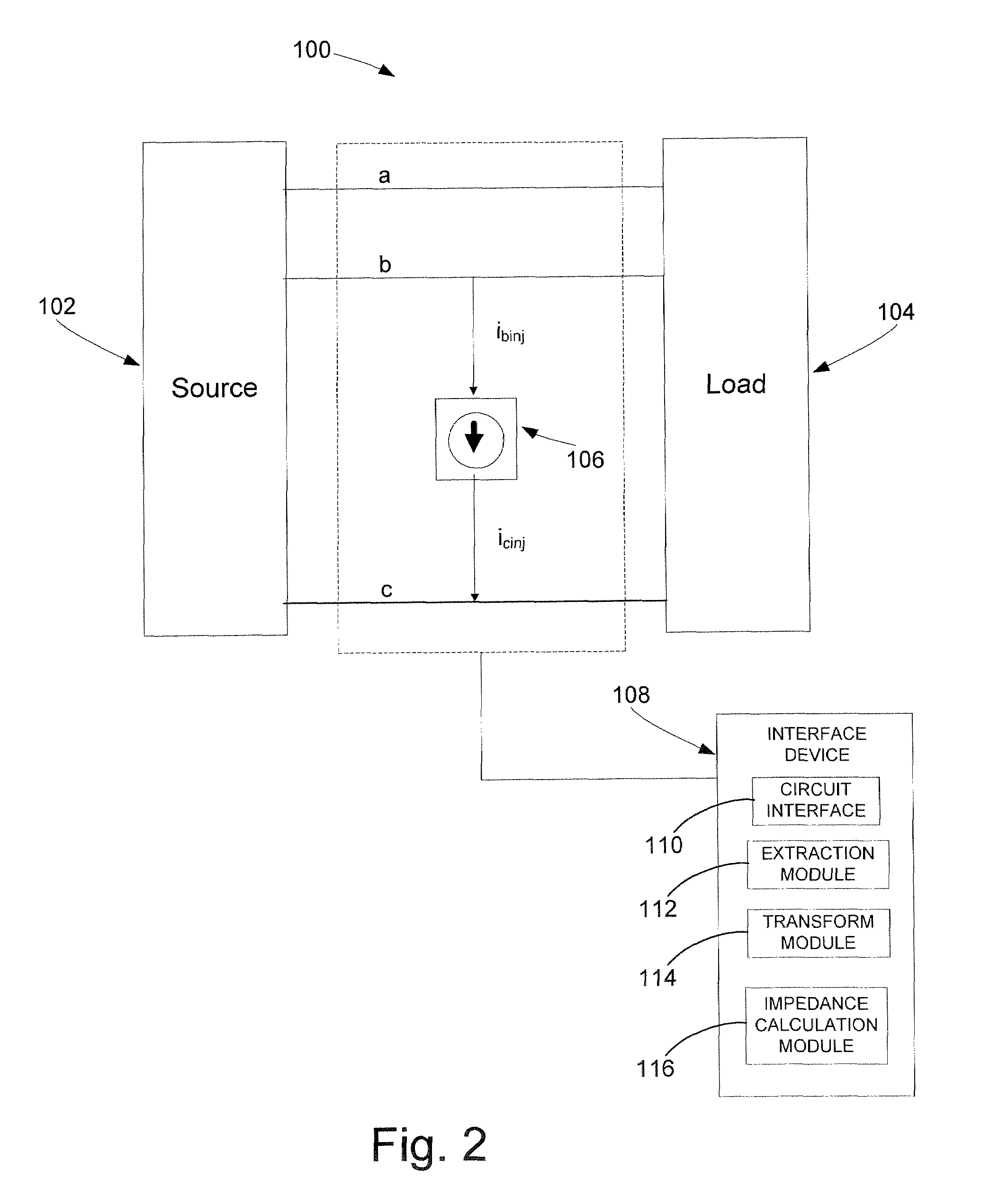Impedance measurement using line-to-line current injection
a technology of current injection and impedance measurement, which is applied in the direction of impedence measurement, resistance/reactance/impedence, instruments, etc., can solve the problems of negative impedance, affecting the stability of the overall power system, prior current injection techniques of three-phase ac circuits,
- Summary
- Abstract
- Description
- Claims
- Application Information
AI Technical Summary
Benefits of technology
Problems solved by technology
Method used
Image
Examples
example 1
[0080]FIG. 5 illustrates a three phase ac circuit injected by a current injection device. In the example, the injection device is a chopper circuit. Further, in the example a line-to-line chopper circuit injection was simulated for the three phase ac circuit shown in FIG. 5 using Advanced Continuous Simulation Language (ACSL). A fixed-frequency (60 Hz) ac power source with input inductors is used to represent a utility grid or a d-q synchronous generator. The source is connected to an R-L load through a R-C filter. The injection circuit was placed after the R-C filter and before the R-L load. Therefore, the source impedance measured in this system is composed of source R-L circuit and R-C filter. The load impedance is a simple R load circuit. The frequency was swept from 48-Hz to 4995 Hz and the source impedance and load admittance was extracted for each frequency. FIG. 6a graphically depicts source impedances determined from simulation using chopper circuit current injection. FIG. ...
PUM
 Login to View More
Login to View More Abstract
Description
Claims
Application Information
 Login to View More
Login to View More - R&D
- Intellectual Property
- Life Sciences
- Materials
- Tech Scout
- Unparalleled Data Quality
- Higher Quality Content
- 60% Fewer Hallucinations
Browse by: Latest US Patents, China's latest patents, Technical Efficacy Thesaurus, Application Domain, Technology Topic, Popular Technical Reports.
© 2025 PatSnap. All rights reserved.Legal|Privacy policy|Modern Slavery Act Transparency Statement|Sitemap|About US| Contact US: help@patsnap.com



